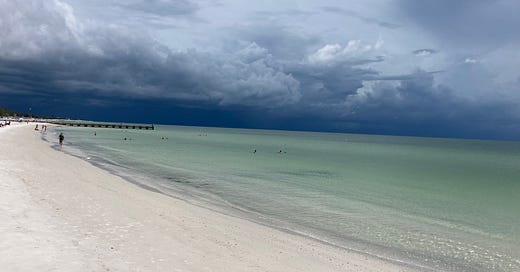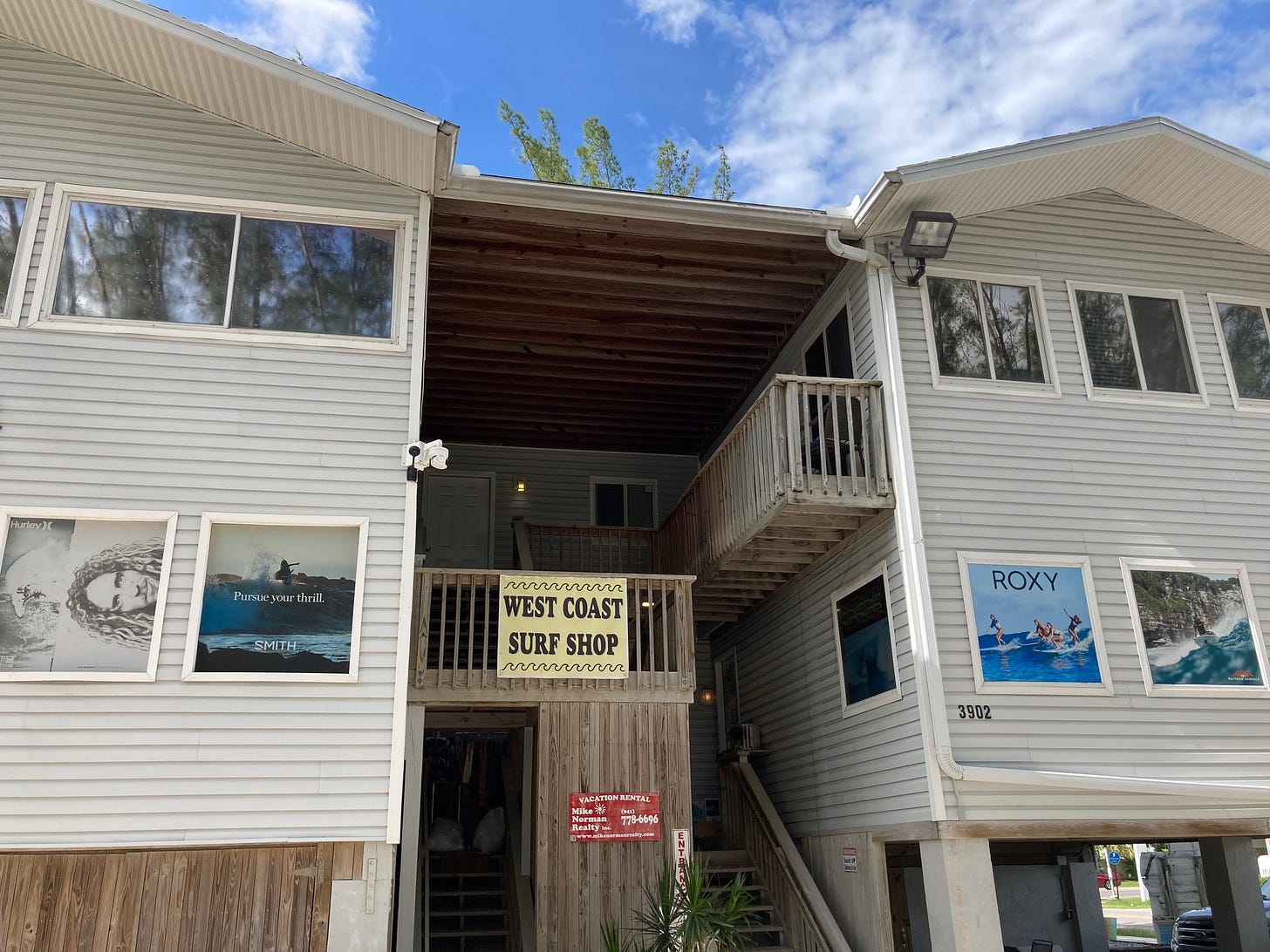On the gulf coast of Florida, there’s a quiet beach dotted with visitors from colder climates unwinding and relaxing. The dominant activities around the island are sunbathing, fishing, and collecting seashells. On an average day, the waves are so small that they could be mistaken for a ripple on a lake if it wasn’t for the turquoise water and white sand. Once in a while from June 1st to November 30th (aka Hurricane Season), a gritty group of local surfers charge past the evacuating tourists and head for the surf as a hurricane approaches.
The quaint Anna Maria Island lies near the larger cities of Tampa and Sarasota. While northerners from New York City or Boston flock to the East Coast beaches of Fort Lauderdale or Miami, Anna Maria Island is known as a hidden gem and tends to attract a low-key Midwest crowd with its subtle charm. Other Florida beach communities depend on the partying spring break crowd, but this Island is content to cater to families, retirees, or Europeans looking for a quieter beach scene.
The locals accept that their livelihood largely depends on the steady stream of tourists visiting their beaches, buying souvenirs, and visiting restaurants. Restaurants play Jimmy Buffet music because … well, that’s what the tourists expect to hear. For the young and restless in the area, there isn’t much adrenaline-fueled adventure opportunities nearby. They can’t really be surprised though when most of your visitors are hoping to play golf or tennis.
This young and restless crowd gets fired up at the approach of a hurricane though. It’s their chance to taste adventure and paddle out into rolling waves common in places like California but rarely seen here. When the meteorologists create a cone showing a path into the Gulf of Mexico, the out-of-town visitors quickly pack up and head out. They are about as comfortable with a hurricane approaching as a Floridian with an inbound blizzard. The local surfers have done this drill before though. They wave goodbye to the tourists and check Gulfster.com which is the usually the best source for local surf forecasts, action shots, and local surfing news1. At Gulfster.com, you can check out the latest wave meter graphic that’s been running consistently for years.
After surfers check the forecast, they head over to the West Coast Surf Shop. West Coast Surf Shop is the year-round epicenter of the surf community and one of the few places around with a serious surfboard collection available for purchase. Before Gulfster.com became the trusted site for surf reports, locals often called 941-779-0000. This was a West Coash Surf Shop voicemail recording where the owners would update messages describing the surf conditions up and down Anna Maria Island. This was a vital resource to help surfers from around the area decide if the surfing conditions were worth the trip to the beach. The phone number has since been discontinued but had a great run known as the “Wave” number.
After local surfers check the forecast Gulfster.com, pick up wax at the West Coast Surf Shop, and look up the latest track on the National Hurricane Center website… they have to wait. Depending on the speed the storm is approaching, the waves may not arrive for several days.
Then finally, the waves arrive.
Typically, the cleaner waves come in earlier when the huge swirling storm enters the Gulf of Mexico just northwest of Cuba. The surfers paddle out into the warm tropical water and ferociously tackle the next few hours until their arms can’t paddle anymore. They know depending on storm patterns this could be their best chance to catch a wave for months.
The gulf coast surfers are a different breed; they are usually less territorial than the groups in California or Hawaii. There are a handful of secret spots in the area, and you might see “Locals Only” painted there. However, they don’t have to worry about out-of-town surfers crowding out their lineups, because well… which serious surfer is going to buy a flight into Sarasota on short notice? Hardcore surfers from around the world might drop everything to chase a swell brewing in Costa Rica or the South Pacific, but certainly not the Tampa Bay area. All things considered, the gulf coast surfers really are locals making do with the best surf available with little competition from outsiders. For the kids that grow up surfing here (or trying to surf), they will be pleasantly surprised with cleaner conditions and more consistent waves almost anywhere else in the world (which can play to their advantage, just ask Professional Surfers Cory and Shea Lopez2).
Surfers of all skill levels will paddle out into the storm and test their skills with waves ranging from 3-5ft (sometimes higher). They have a short window before the wind increases from the storm and the waves become too unmanageable to surf at all. At a certain point, the risk of a rip current and choppy waves become too much and the surfers paddle back in. They head home to track the latest spaghetti model for the storm and pray their power stays on. They’ll check Gulfster.com to see if any surf photographers got a shot of their best ride and to see pictures from surf sessions around the area. If by chance they find a picture of themselves, they’ll become somewhat of a local surfing celebrity and their picture will be recorded for years to come in the Gulfster archives.
As the surf day ends, this small community of warm water surfers wind down and checks the National Hurricane Center one more time. They just might find another tropical storm spinning off the coast of Africa and heading their way.
Thank you for reading! If you enjoyed this, please share with a friend who would find it interesting.
-Zach
p.s. Video below from Anna Maria Island during Hurricane Debby (August 2024)
Gulfster Archives. You can see surfing pictures from nearly every major storm going back to 2002.
INTERVIEW: CORY LOPEZ . Surfer.com Article on Cory and Shea Lopez growing up surfing in the Tampa Bay area.






